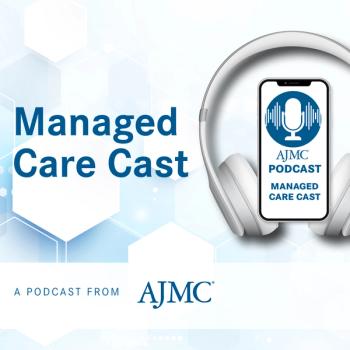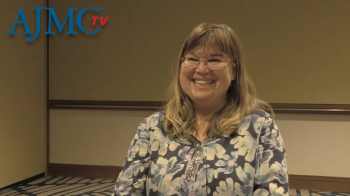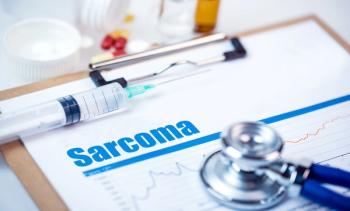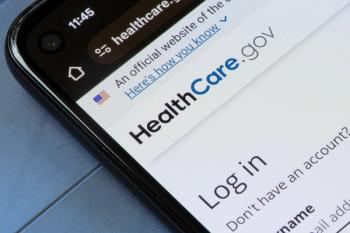
Financial, Psychological Burden of Abortion Care in US Raises Calls for Expanded Insurance
Key Takeaways
- Patients traveling out of state for abortion care face significantly higher costs, with 65% incurring catastrophic health expenditures.
- Financial burdens from abortion-related costs are linked to increased anxiety and depression symptoms among patients.
There are significant financial and psychological burdens of abortion care in the US, especially for those traveling out of state due to local restrictions in the increasingly restrictive post-Dobbs landscape.
The costs associated with accessing abortion care in the United States often impose substantial financial burdens on patients, especially those who must travel out of state due to local restrictions or clinic availability. A new cross-sectional study sheds light on the significant financial strain that many patients experience when seeking abortion care, particularly for those traveling across state lines.
"These financial and psychological burdens encountered by patients who seek abortion care are likely even worse in the current post-Dobbs context, when more people must travel longer distances and out of their state of residence to access care," the researchers wrote. "The findings suggest a need to expand insurance coverage to ensure equitable access to abortion care, irrespective of people’s state of residence."
While this study evaluated data before the Dobbs decision, a
“The US Supreme Court decision overturning Roe v Wade in June 2022 has significantly altered both access to reproductive health care services and how providers are able to treat pregnancy complications in the 21 states that ban or restrict abortion access," the report
It also showed maternal death rates are highest in the Mississippi Delta region, encompassing Arkansas, Louisiana, Mississippi, and Tennessee, all of which had abortion restrictions before the Supreme Court decided to overturn the constitutional right to an abortion and now have total abortion bans.
Abortion care access was a
Study Analyzes Total Costs of Abortion Care
Conducted in 2019, prior to the Supreme Court's Dobbs v Jackson Women’s Health Organization decision, this study analyzed abortion-related catastrophic health expenditures (CHEs) among patients at clinics in abortion-supportive states, revealing a trend: many patients face substantial financial and psychological costs, supporting the need for policy changes around abortion coverage.1
The researchers surveyed 675 patients, aged 15 to 45, across 4 clinics in California, Illinois, and New Mexico between January and June 2019. Most participants were between 20 and 30 (55%), and the racial and ethnic distribution was diverse, reflecting a cross-section of patients seeking clinic-based abortions across the US at the time; 28% identified as Black, 24% as Hispanic or Latinx, 29% as White, 6% as Asian, Native Hawaiian, or Pacific Islander, and 12% as multiracial or other backgrounds.
Notably, about one-third (31%) of the participants traveled from out of state to access abortion care, often incurring exorbitant expenses for transportation, accommodations, and time away from work and other responsibilities.
Defining Catastrophic Health Expenditures in Abortion Care
CHEs were defined based on participants’ ability to pay. The researchers calculated this by deducting 46% of household income for basic needs from their monthly income, as per national averages for food and housing. The study defined expenses as catastrophic if they exceeded 40% of this remaining income. CHEs include both the direct costs of abortion care and additional fees such as transportation and accommodations, childcare, missed work days and lost income. Participants reported out-of-pocket costs, which were then summed to assess total abortion-related expenditures.
Abortion Costs Triple for Out-of-State Care
The study findings exhibited substantial disparities in abortion access and costs for patients traveling out of state compared with those seeking care within their home state. Out of the 675 patients included in the final analysis, 31% (n = 212) traveled out of state for abortion care, while the majority, 69% (n = 463), stayed within their state.
Among those who traveled, a significantly higher proportion sought abortion services at or after 20 weeks gestation (19% of out-of-state patients vs 13% of in-state patients, P < .001) and was more likely to pay out of pocket (89% vs 24%, P < .001). Additionally, 51% of out-of-state patients lived more than 100 miles from the clinic, compared with only 15% of in-state patients (P < .001).
An estimated 42% of participants incurred abortion-related CHEs, indicating that abortion costs present a significant financial burden for many patients. While the mean (SD) monthly household income for patients who sought care in-state ($2567 [$2688]) and the average ability to pay ($1386 [$1452]) was similar to those who sought care out of state ($2673 [$2442]; $1443 [$1319]) the financial burden for out-of-state patients was significantly higher amounting to more than triple than that of those who stayed in state.
The total costs for these patients were $1367 [$1929] compared with $411 [$606] for those who stayed in state. The total included the cost of abortion care ($838 [$1443] vs $153 [$305], respectively) and additional non–health care costs ($569 [$974] vs $268 [$447]).
These data demonstrated that more than half (65%) of patients who traveled out of state were significantly more likely to incur CHEs (138 of 212) than the 32% of those who received abortion care in state (147 of 463; adjusted prevalence ratio [APR], 2.24; 95% CI, 1.67-3.00). The researchers stated that the disparity can be attributed to additional expenses, such as transportation and accommodations, which disproportionately affect those who cannot access care locally.
Mental Health Impact Associated with Abortion-Related CHEs
The financial burden associated with CHEs also correlated with mental health challenges. Individuals who experienced abortion-related CHEs reported higher levels of anxiety (APR, 1.13; 95% CI, 1.07-1.19) and depression symptoms (APR, 1.25; 95% CI, 1.12-1.39).
However, there was no significant association when analyzing stress (APR, 1.06; 95% CI, 0.99-1.12). The researchers noted the sensitivity analyses that included all individuals who completed the survey (N = 784) before being excluded for missing expense and income data showed substantively similar results throughout.
"These findings shed light on the profound financial and psychological burdens faced by individuals who access abortion care in the US," the study stated. "Because CHE is the result of high out-of-pocket costs combined with low ability to pay, patients accessing abortion care are at particularly high risk for CHE, with studies showing that most live on a low income and many lack health insurance."
Policy Implications and the Incoming Administration
Several states
Meanwhile, blue states like New York, Maryland, and Colorado also confirmed protections, with Colorado lifting restrictions on public funding for abortions. However, measures were not passed in Florida, Nebraska, and South Dakota, which voted red in all 3 elections since 2016.
As the incoming Trump administration prepares to take office, the future of abortion care in the United States faces heightened uncertainty. Despite the recent passage of state-level protections for abortion in several states, significant barriers remain, especially for those in states with restrictive laws.
The correlation identified between those who experienced CHEs and higher symptoms of stress, anxiety, and depression emphasizes the need for policy changes to repeal the Hyde Amendment, expand insurance coverage, and ensure accessible abortion care to alleviate both financial and psychological burdens, especially amid increasing out-of-state travel post-Dobbs decision.1
"Health insurance addresses only the costs of the abortion itself and does not usually cover, or is not used for, ancillary non–health care costs such as accommodation and transportation," the researchers wrote. "Our results indicate that both direct and indirect expenses are substantial."
Out-of-state patients bore an even greater financial burden, with 65% likely to incur CHEs due to ineligibility for Medicaid and longer care-seeking processes. Medicaid reduced out-of-pocket costs for some in-state patients, though 32% still faced CHEs, often due to complex reimbursement and privacy issues.
With the persistent risk of catastrophic health expenditures for those seeking abortion, the evolving political landscape underscores a critical need for policy solutions to address both the direct and indirect costs associated with accessing abortion services.
References
1. Wasser O, Ralph LJ, Kaller S, Biggs MA. Catastrophic Health Expenditures for In-State and Out-of-State Abortion Care. JAMA Netw Open. 2024;7(11):e2444146. doi:10.1001/jamanetworkopen.2024.44146
2. Grossi G. New report shows worsening health outcomes for women in states with abortion bans. AJMC®. July 18, 2024. Accessed November 12, 2024.
3. Caffrey M. 5 Hot health care topics in the presidential election. AJMC. October 18, 2024. Accessed November 12, 2024.
4. Klein H. 5 things about state votes to protect abortion rights. AJMC. November 8, 2024. Accessed November 12, 2024.
Newsletter
Stay ahead of policy, cost, and value—subscribe to AJMC for expert insights at the intersection of clinical care and health economics.















































